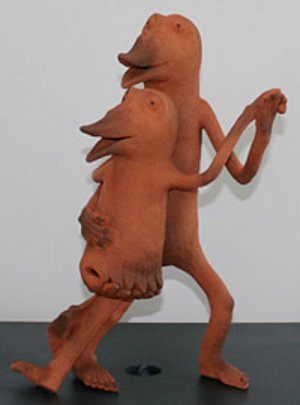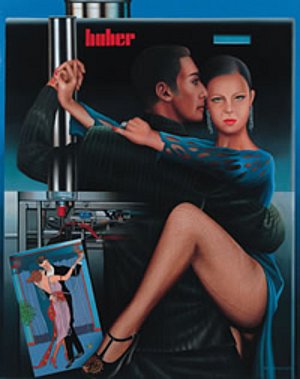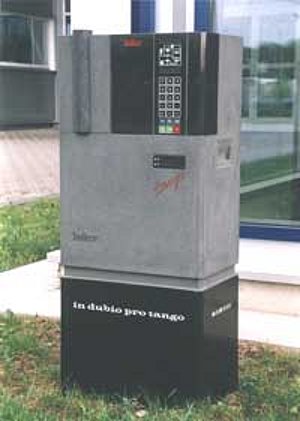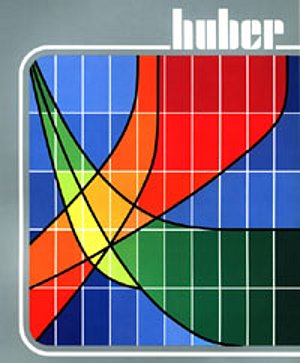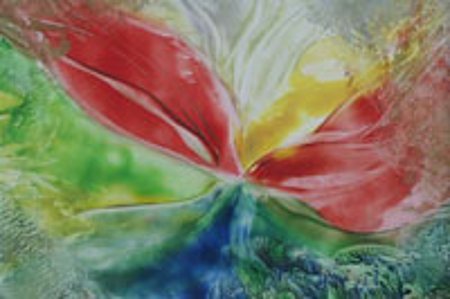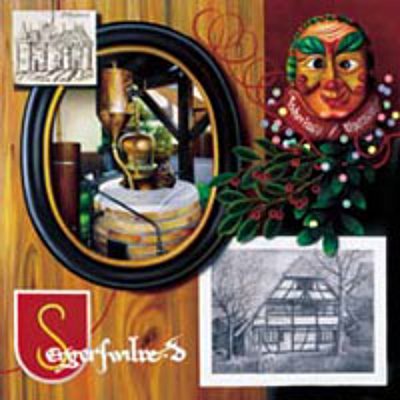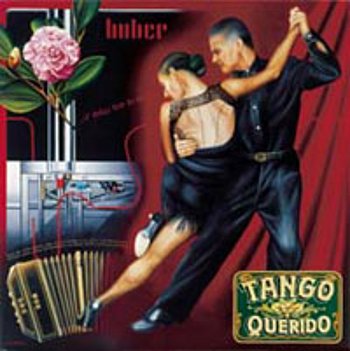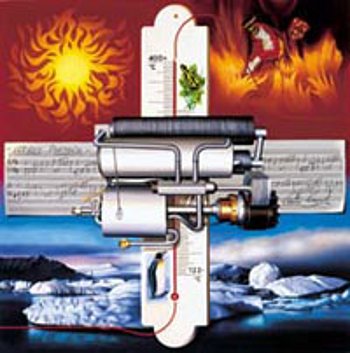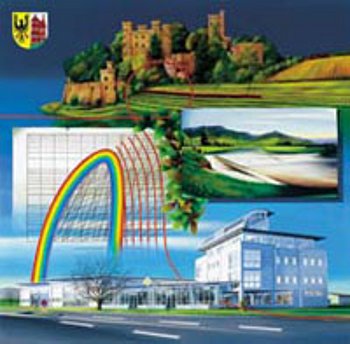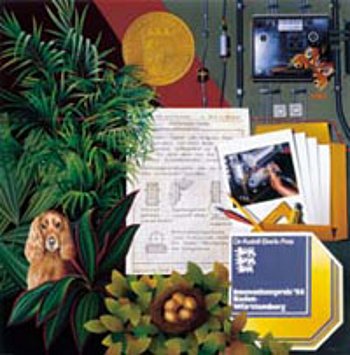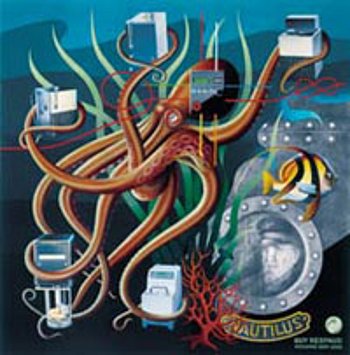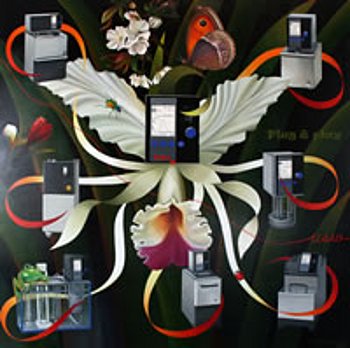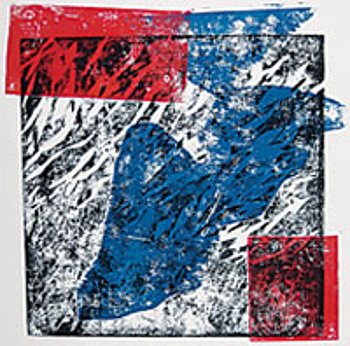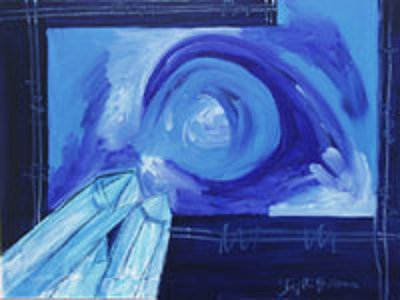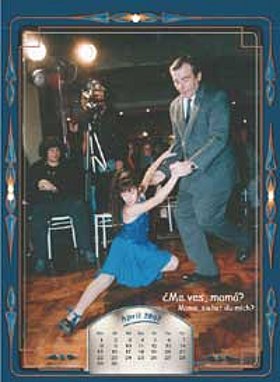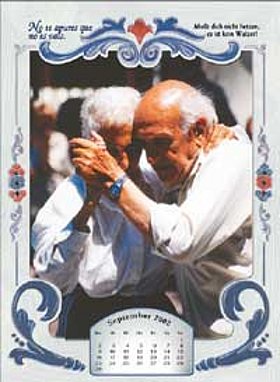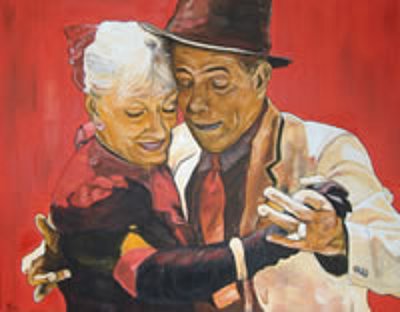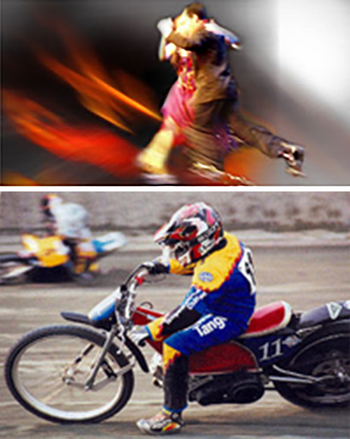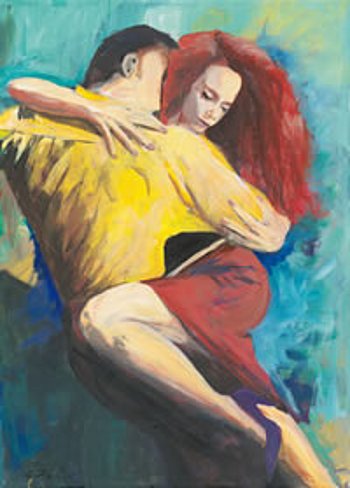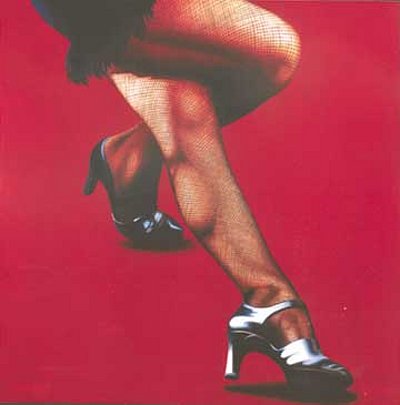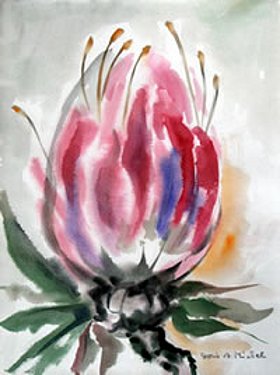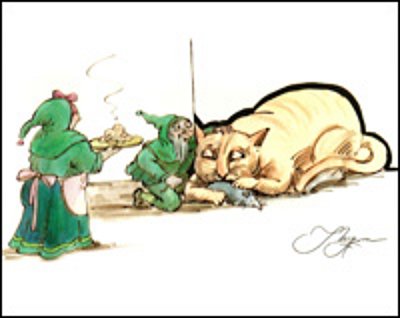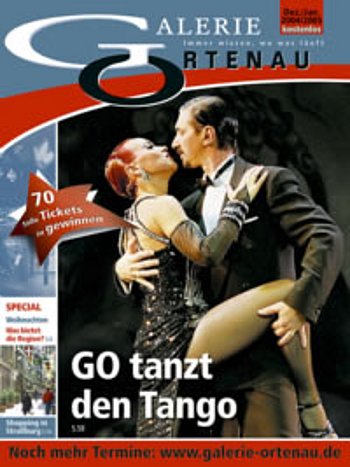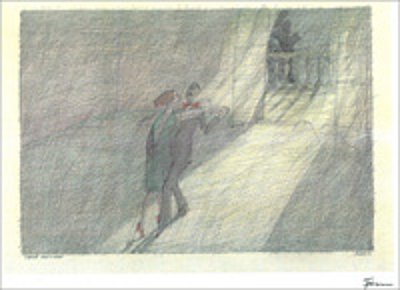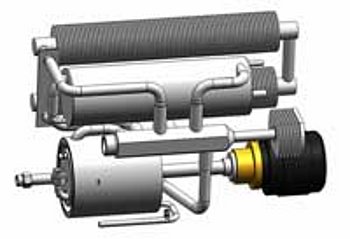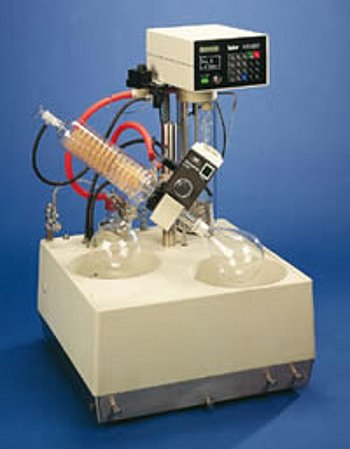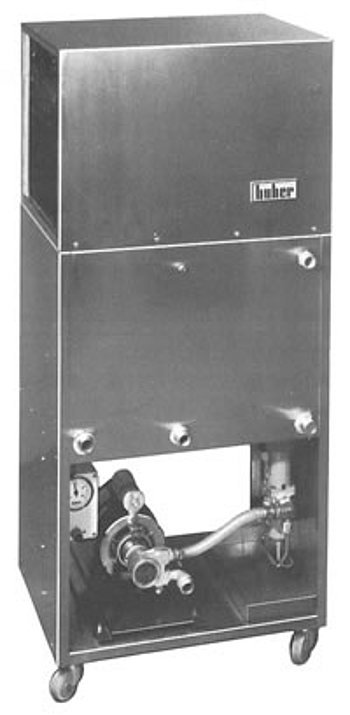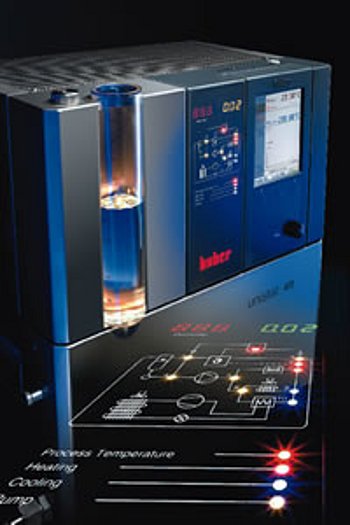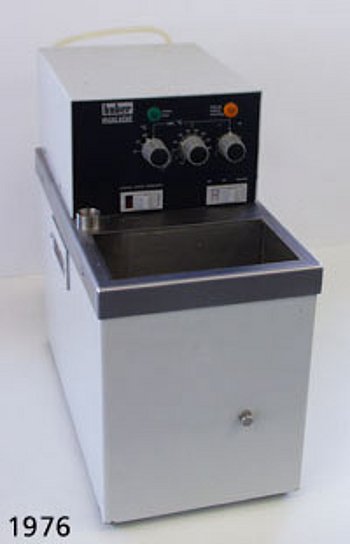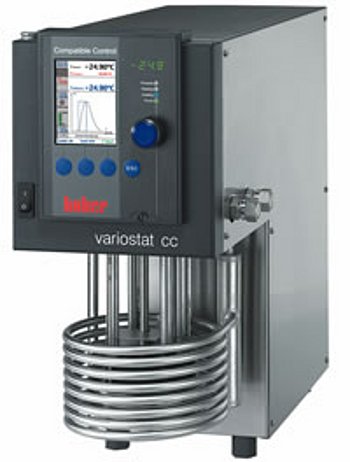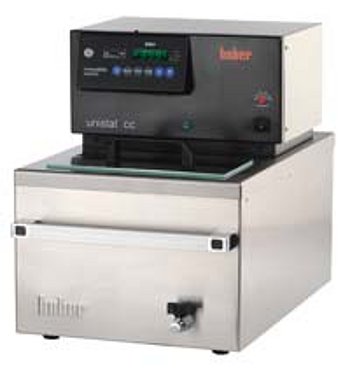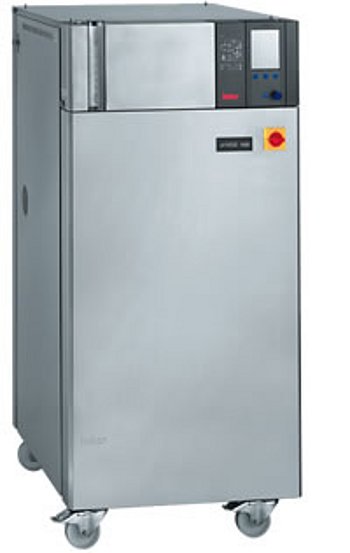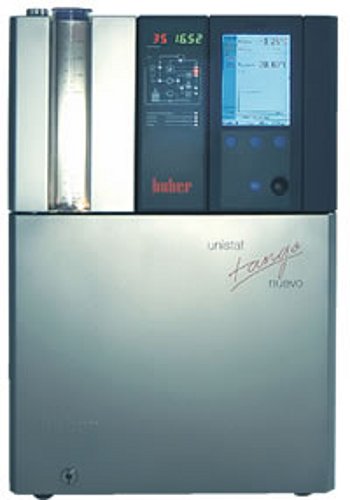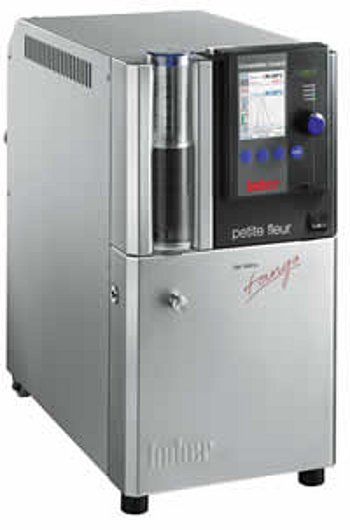
art@huber
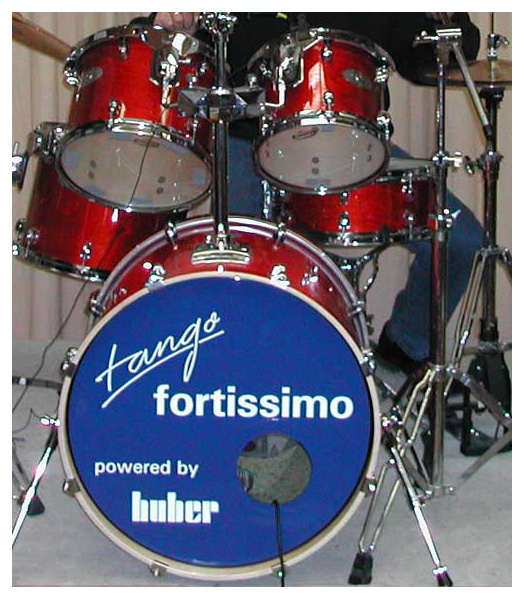
The Art@Huber gallery was created in memory of our founder, Peter Huber. It combines technology and art in a unique way and tells the story of the history, visions and creative forms of expression that have always shaped our corporate culture. The gallery not only honours Peter Huber's lifetime achievements, but also shows how closely the world of chillers can be linked to art, culture and inspiration.
The end justifies the art work. So, no objections can be made to any work of art that ultimately helps promote the Ministat’s and Tango’s reputation even in the most remote corners of the laboratory world, and the ever increasing degree of recognition that the Huber company has come to enjoy has to be accepted. The mini soccer players of the football club VFR Elgersweier that play for the Ministat (and have scored many a goal) and the youth's choir of the Elgersweier music club who beat the advertising drum for the Tango fortissimo are institutions that set the tone - That is what is called collateral fame.
Tango fortissimo: The first president of Offenburg's municipal orchestra - a cultural expert and a majestic voice within the Offenburg city council - has set the second main proposition of the Tango philosophy to music. "It Takes Two to Tango", station 3.
Tempo needs tango. With quite an uproar, Friedrich Ruf became the German motorcycle champion five times in a row, wearing a protective suit sponsored by the Tango factory (safety first) and doing promotion work for the Tango's speed. That was music in our ears, and we are wild about the commotion. Art@huber, on the other hand is more a feast for eyes and emotions. Tango piano for bon vivants: The cultivated never regret pleasure; the uncultivated do not know what pleasure is (Oscar Wilde). Art@huber tells the story of the Tango factory, as well as the history of the differences and similarities that exist between the Tango-Alemanno and the Tango-Argentino. Guy Respaud's history of the Tango can be admired in the Tango factory's cafeteria and the Tango factory's thermodynamic works of art can be admired at the Manual of Tempering Technology and at www.huber-online. com as well as in thousands of laboratories around the world. A few examples can be found in the second gallery "concrete art". Now, though, it is time to let the hammer and chisel and the graphic art paintbrushes tell their story.
The thermodynamic-hydraulic cardiovascular system of the Tango is a work of art crafted by local refrigeration engineers and stainless steel welders. The following objects from the studios of the Ministat-Unistat-Tango builders are recognised works of art in thermodynamics and microelectronics. This gallery only shows pieces of art that have not been invented and built anywhere else in the world in this form and technology.
Contrary to the usual conventions of the fine arts, which attach great importance to unique pieces, and because we also have to make a living, most of the objects can be found in their thousands*) in the better families of the laboratory world. There are around ten thousand copies of the Ministat alone, the baby of the refrigerated thermostats. Ministat, Tango and the large Unistats are probably better known than the Huber company.
*) approx. 100,000, as of 2010
According to legends (Wikipedia), the famous Black Forest kirsch was first distilled in Elgersweier (first gallery). The schnapps kettle is the most common distillation apparatus in the Ortenau region. The distillation apparatus most commonly used in research and therefore also in the Tango Club is the rotary evaporator. Originally operated with an electric heating bath, a water-cooled condenser and a water jet pump. This, driven by drinking water and with a direct outlet into the sewage system, contributed over decades to the fact that North Sea salmon and Black Forest trout no longer met alive.
The ROTOSTAT is Huber's first contribution to water conservation. A federal patent and winner of the Baden-Württemberg Innovation Award. The only thermostat that regulates and evacuates and also heats and cools at the same time, because both are required simultaneously for distillation. According to its intended use, the rotostat is a workstation for rotary evaporators. Historically, it is a Trojan horse. Unnoticed by later followers, it is the thermodynamic ancestor of the tango.
Originally, it is also the microelectronic ancestor of the Tango. Six months after the award ceremony, the Offenburg Technology Park is founded, and one of the first new founders at the TPO receives one of his first orders to develop the first microprocessor from the Huber company (Z80) for the rotostat.
Thermodynamics and microelectronics - in that order - it takes two to tango. 20 years later, the Offenburger Tageblatt "A funding concept with resounding success".
Sufficiently advanced technology can no longer be distinguished from magic (Arthur C. Clarke). In fact, various origins of the Huber tempering technique are so subtle that competitors often only cry out years later.
Cui bono, for whose benefit? The rotostat, the previous feat, triggered the tango thermodynamically and, because it needed it itself, also helped the tango to become today's microelectronics. Unfortunately, the run on the tango has led to a slower reproduction of the rotostat. Which you can laugh about (because of the success of the tango) or cry about. But the solution is coming. The Rotostat is getting something back, namely the best microelectronics and the most convenient operation imaginable.
So the final Rotostat waits like a rabbit in a top hat, while the ROTACOOL gives a taste of space and room economy. The original Rotostat won an award because of its capabilities and because it takes up no extra space at all, including all its refinements. Not completely invisible, but an excellent example of extreme power density (watts/cbm), which is almost infinite. To bridge the gap and as a consolation for patient Rotostat fans, this feature has been carried forward in advance by the Rotacool.
The ROTACOOL is a co-product of Heidolph (for the naming) and Huber (for technology and design). The most original cooling device for rotary evaporators up to 3-litre flasks. With an output of 450 watts and hardly noticeable, because as you can see after clicking on the picture, the additional space requirement is zero. Heidolph and many customers had not expected this. However, the inventors of the Ministat-Unistat-Rotostat-Tango do not consider it disreputable to be asked for miracles.
In Baden, where milk and honey flow but no oil, we live mainly from saving energy. But we also live on air and love and a good drop of wine. In vino veritas... Alcohol is healthiest in wine.
In the Ortenau region around Offenburg, where legend has it that babies are born with tartar in their stomachs, and in Alsace around Colmar and Riquewihr, you will find the oldest Roman wine-growing regions and the oldest applications of early tango technology. In the centre of it all is the tango factory, where tango alemanno has been cultivated since the end of the 20th century. In tango veritas, but only after relevant experience had been gathered from the Baden-Alsatian viticulture and brandy distillery. The first wine cooler from the Huber company was used by the Fessenbach winegrowers' co-operative to precipitate tartar at minus 4 degrees Celsius. This is also the optimum temperature at which fuselage substances are filtered out when refining spirits. Huber distillate coolers in France use the same process to refine perfume, which of course brings us back to luxury foods. In small quantities. The first large Huber distillate cooler was used by the Weiss company in Gutach to cool large quantities to minus 4 degrees C and reheat them to bottling temperature, which others had already been able to do before. With electric, gas or oil heating. A reason to get involved?
We have always intervened where there is something to be gained thermodynamically or even just energetically (we have also intervened to close the hole in the ozone layer). Whether the snow on Mount Kilimanjaro will soon be yesterday's snow is a very high hanging question for our significance. However, it can be proven that the voluntary early phase-out of CFCs in the tango factory (hole in the ozone layer) and the development of energy-saving processes are beneficial to environmental compatibility (greenhouse effect). The distillate cooler of the early Tango technology, with refrigeration heat pump and heat recovery, consumes 1/10 of the energy of the conventional method.
In tango veritas... The thermodynamics resulting from the wine and brandy coolers, as well as the rotostat, prove that the tango is not from bad parents.
Huber thermostats are faster than others, but this is only possible with the fastest controller. The electronic masterpiece of Huber thermostats and chillers is the Plug&Play technology. Exclusive since 1980, three to four heads for large families with 20 to 50 different members. In 2003, the masterpiece of this idea led to 300 completely different, small and large (namely all conventional) Compatible Control thermostats and Unichillers being controlled by a single, identical, interchangeable microelectronics. In three versions, simple, convenient and dialogue-capable, with different levels of comfort, which can be interchanged at any time. No fuss and no downtime, no fitter and no significant costs. Two or three simple steps. If you press on it with your mouse hereyou can best see what you should believe.
There is no question that the competitors, who all come from this side, also have excellent controllers. With foolproof operation. However, the electronics kit that came in from the cold (at least you can say that) is priceless. Five minutes to the nearest workshop or the end of the world. For a quarter of a century with a 3-year guarantee (so as not to jeopardise quality and durability).
The latest feat, and therefore the real masterpiece of Plug&Play technology, combines the old world of conventional thermostats with the new world of Tango at the critical point of user guidance. At the end of this biggest operation in Ministat-Unistat Tango history, the entire Huber fleet, with a few exceptions of simple chillers, will be controlled by only two physically different controllers. Compatible Control for the Old World and Unistat Control (which is also a Compatible Control) for the New World of Unistats. Plug&Play and according to the same rules for the pilots who have to work with it day after day. And for the children who come tomorrow and don't have time to learn.
Historically speaking, the polystat regulator from 2003 is only a temporary highlight of the exclusive Plug & Play technology. Initially, it is also a provocation.
The smallest controller in general temperature control technology dominates the largest armada of conventional thermostats, which has sailed away from all others. There seemed to be only one thing the pursuers could do about it: larger display windows that would give the tiny polystat controller a run for its money.
When the competition retreats, it retreats. The Ministat-Unistat Tango developers only backed off in order to be able to take a better run-up. In 2008, the big eyes of the Compatible Control thermostats at the epicentre under the Huber exhibition tower promptly caused a stir, because the latest feat has a screen almost as big as the Tango, and only Ingrid Bergmann's eyes are more beautiful. Excitement in the camp of the persecutors (you're getting on my nerves kid) and especially in the camp of the supporters. A dream in seven languages that frightened some and delighted others.
Nobody can look up a staircase like Rhett Butler (Clark Gable), but never before could you read so much out of the eyes of an ordinary thermostat. The little controller with the big eye was the last trick, but the next one follows immediately, because the new Compatible Control Pilot literally jumps out at us to bring the little tango "Petite Fleur" (at the end of the gallery) to life.
Thermodynamics and microelectronics - it takes two to tango. It wouldn't have been a tango the other way round. The second law of tango philosophy dictates that it takes two to tango. It does not dictate that thermodynamics should be more important than electronics. But the best controller does not make a winner out of a lame duck. If the lady doesn't want to or can't, the best tango dancer can want what he wants. On the other hand, the best thermodynamics and the most ingenious refrigeration technology cannot show what it can do if the leadership is asleep.
The Tango has become the fox in the henhouse because it is x times faster for thermodynamic reasons, and of course it also needs to be controlled x times faster. The Unistat Control unit of the Tango Nuevo not only regulates many more (internal) temperatures than others, but also, for example, stepper motors for high-temperature cooling, cooling water, refrigerant pressures and, more recently, pump pressure. These are tasks that are not found at all in conventional technology and are few and far between in the lagging movement to catch up with the tango. On the other hand, the other side has not failed to find its Achilles' heel in operation. Petty malice maintains enmity. That's the end of this theatre.
When the grumbling reached the good Lord, he decreed that young blessed people should be optionally equipped with keyboards instead of harps (from Traxler's short stories) and, by decision of the Swiss Tango Club in Spiez (the Tango Club is our highest authority), the Tango Nuevo at the end of the gallery was given the same easy-to-use Compatible Control thermostats (above) and Unichillers. With rotary encoder and three buttons. But also a touchscreen with graphic functions and online help. Not an option, but standard for the planned eternity.
And the Tangoclub saw that it was good - creation story. It's never good enough, but after the biggest operation in Tango history, anyone who knows the Ministat or the Tango will be able to operate any other Huber thermostat or Unichiller intuitively straight away. Of course, the Tango is never finished. The endless possibilities of the screen alone will keep the software people at the Tango factory and many Tango fans who depend on it awake at night.
The feat of the original Ministat from 1976 goes back to the Nordic cool wish of the Eppendorf company: "please half as big" (as others). The first Ministat on a beer mat was created that same evening. This refrigeration dwarf proves that the Huber company, which also builds the largest refrigerated circulators, once started out very small.
The Ministat from 1981 was a feat of extreme power density that had never been equalled (by others) before or since. Everybody's darling. Whoever has the Ministat keeps it ... always.
After a quarter of a century of cool reenactments, in 2003 the top dog of the miniatures comes in velvety matt blasted stainless steel and with two big brothers. Each is the smallest (and the finest) in its class. Aesthetics at work: the feat of the all-stainless steel miniature is designed for eternity and for delicate laboratory fingers. You only need to run your cleaning cloth or bare hand over the edge of the kettle to believe it.
Enthusiastically received by old owners and newcomers alike, the three Ministats have literally broken down open doors. The only thing missing was that the Ministat could be controlled with the same controller as all other Compatible Control thermostats.
Voilá: At Analytica 2008, the all-stainless-steel Ministats come with the masterpiece of Plug&Play technology. Let's hear it!
A thermostat does not have to be able to do a somersault. That would amount to over-engineering. Nevertheless, it should have something special if it wants to be called Huber.
The unique flexibility of the Tango makes it possible, for example, to control the temperature of a closed system on even-numbered days and an open bath of any size on odd-numbered days. An impossibility for conservative technology, which, with the notable exception of the Variostat, has nothing like this to offer.
A bathroom to suit the task at hand for every occasion. Today like this, tomorrow like this. Extending baths that are too small in compact thermostats can lead to the expense of a ship's hoist. To avoid this, the exotically built Variostat is the only conventional bath thermostat with a loose bath tank. Although it is only one of the options in the Huber range and must be hushed up by the other side because of its uniqueness, it will probably remain the case that the Tango and the large Unistats for large capacities and the Variostat for small capacities are the experts for any bath.
With the new Compatible Control on its nose, with a screen and graphics right in the centre of its face, the Variostat will continue to lead the way in the future, in the interests of its inventors and, above all, its users.
He feared the tango above him and the ministat below him and nothing else in the world. He was the godfather of the tango and gave his name to the exclusive principle of the unistate. There was nothing better. Everything that could be imagined to improve the classic Unistat has been measured against it. It was also the inspiration for the all-stainless steel Ministat and thus dug its own grave. For the first time, the Ministat has managed to do what none of its countless pursuers have managed to do for 27 years: to beat the Unistat technically and surpass it in terms of power density. This means that the first famous Huber veteran, a first-class draught horse, could be taken out of circulation (the boy is alive, the horse is dead - Heinz Erhard). No nostalgia: the Unistat cc is taken out of the line of fire, but built in ambush until the last Unistat fan has succumbed to the more beautiful Ministat.
A faithful defender of the classical unistat (the godfather) from the critical faction in the tango club (constructively speaking) has temporarily succumbed to the impression that various users have the tango because it is so beautiful (the tango). A dubious compliment, when legions of both camps are desperately endeavouring to keep the conventional business and not leave it to the other side.
"What can Sigismund do about it...", what can the tango do about being so beautiful? Lab technicians who don't have a Lamborghini in their yard don't have the Tango because it's so beautiful, but because a classic thermostat is technically inferior and would be more expensive than cheaper with a lot of peripherals. If there are alternatives, you should make use of them. In any case, nobody at Huber is thinking of devaluing classic technology. On the contrary. According to the Tango Factory's species protection agreement, all findings from Tango development are also evaluated and utilised for their usefulness for the Unichillers and for the conventional technology of the Compatible Control thermostats. The latest example:
Six months before the Tango Nuevo is ready to be served, all Compatible Control thermostats are equipped with adjustable pumps. In dubio pro Tango, but even if more and more super high-tech top models from the alliance of Tango followers will soon be able to operate height-adjustable fountains, ordinary Huber thermostats have long been able to regulate the set pressure (and not just the speed).
The Ministat-Unistat tango factory is not a beauty farm, but is committed to technology. It is important to be informed and not to confuse Ministat and Tango and not ordinary and Huber thermostats. Finally, the Manual of temperature control technology was written for this purpose.
The ball is round so that it can move in three dimensions. The record is round so that it can rotate. Or so the world believed until 1978, when the first record in a square shape was released. The title: It takes two to tango.
A thermostat is a thermostat because it only has to be a thermostat. Or so the world believed until the first article about the tango appeared in 1988. In rectangular form. The title: New temperature control system shows progress in thermodynamics.
The tango makers are cooling specialists because everyone knows the direction upwards. Why bother, you can get down from 300 or 400 degrees on your own according to the 2nd law of thermodynamics. Or so the world believed until the first high-temperature unistat appeared in 2000. In round form. The title: CC400.
Because it is a Compatible Control Thermostat based on the exclusive Plug & Play principle and can heat up to 400°C, but can also cool intelligently. No artificial architecture to win a beauty prize, but to tidy up what the heating specialists had overlooked. The trick of the CC400 is its ability to cool in a controlled manner without wasting cooling water, without stinking and without behaving like a steam engine. That's what went down best. And of course the elegant shape. Made of stainless steel. Our work should be elegant, useful and well designed. Otherwise it would have no place in this gallery.
The deeper the Huber. The Tango factory has been building the smallest refrigerated circulator in the world for a quarter of a century and the largest for 10 years, which can weigh up to 4 tonnes. Five kW of cooling capacity at -100 weighs more than a hundred kW at -5°C.
Brrr... (with 15 r...) has taken the business magazine "Hidden-Champions" as a teaser to reveal the secret of the Huber temperature control technology. A good title, because for a warm place below minus one hundred degrees, the stakes are pretty high. The tango factory's deep-freezing machines are among the most unstocked items in the laboratory, but what research needs down to minus 120 degrees, the tango factory builds with serene reliability, and hundreds of tango paramedics from the tango mission around the world ensure that no tango club member gets cold feet.
Ultimately, the feat of the large Unistats with two-stage compressors and two- and three-stage cascades is demonstrated by their ability to function for years on end. The refrigeration engineer is happy and satisfied when he has set a thermostatic expansion valve to half a degree (Chapter II, verse 2). But the thermostat league calculates in millikelvins, which makes ordinary refrigeration engineers shiver. The director and ensemble of the tango story have reinvented neither the wheel nor the spinning motion. They have just put the blinkers on differently. Which has made many neglected, temperature-challenged creatures feel good. In both abstract and concrete terms. And, of course, consistently according to the second law of tango philosophy: thermodynamics and microelectronics - it takes two to tango. The art of the tango results from the alternative details and a hundred "little things". In both disciplines. As tango master Kenny Gregson explains the importance of elementary details on his bagpipes: "If it weren't for this strange stick, as you say, this instrument would sound no better than an ordinary piano".
Tango fortissimo! The Tango Alemanno, as it was christened by Laborjournal to distinguish it from the Tango Argentino, is what it has always been, and yet everything is new, which is what many tango club members wanted. The Tango Nuevo, as it is to be called to differentiate it once again, will continue to be the benchmark for effective temperature control technology and environmentally friendly refrigeration.
Tempo needs Tango. Even among the "highly dynamic temperature control systems" that appeared ten years after the Tango, nothing has been faster. Meanwhile, the Tango is picking up speed once again. What has been promised by many for many years under the flowery term "adaptive control", the Tango Nuevo brings to the point much faster for the first time.
Finally, the Achilles heel identified by opponents, who were increasingly concerned about the usability of the Tango, has been closed. That is now a thing of the past. The Tango Nuevo and the new large Unistats have the same, much-praised simple operation of the Compatible Control thermostats and Unichillers. With rotary encoder and three buttons. But also, as decided by the Swiss Tango Club in Spiez, a touchscreen with graphic functions and online help. Double, but Ministat and Tango, Minichiller and even the largest Unistats and Unichillers follow the same rules. The ease with which children can operate thermostats can no longer be surpassed.
Safety first. Tango and the large Unistats are safety thermostats in themselves. We take it for granted that thermostats have to endeavour to control the temperature as precisely as possible. We take it as a compliment that conservative thermostats have become faster thanks to smaller baths following the global spread of Tango. Although this has brought with it the new problem of expansion. The tango doesn't care. The mastery of expansion is a well-known tango trick. The latest feat of the Tango Nuevo is the regulated pump, with which the pressure in front of sensitive equipment can be set and precisely maintained for the first time. Many glass reactors will be grateful.
A planned coincidence: the new Compatible Control with the big eye suddenly makes it possible to bring the little tango to life, and its name should ring a bell with unblunted tango fans: "Petite Fleur"... that's a tango!
Petite Fleur... Petite Tango... the little tango. Dreamed with my own eyes for years. A reference to Sidney Bechet, just as the Tango Nuevo is named after Astor Piazolla.
The Tango is originally the smallest cooling/heating thermostat among the Unistats, which all work according to the Tango principle and are praised, feared and persecuted as "highly dynamic temperature control systems". In Olympic terms, the Unistats have been amongst themselves for many years and are completely open in terms of performance. The performance below this has been the playground of the ministats and their pursuers until the appearance of the little Tango. Now, however, the box is rattling.
In 2008, the Huber company is 40 (young enough) and the Tango is 20 (old enough) and in the anniversary year, the little one was still making eyes at the Tango Club and flirting with the fact that he is not from bad parents. By all appearances, he will also honour the first principle of tango philosophy: Opus nostrum nobile esto, utile et bene factum. Our work should be noble, useful and well designed. What a coincidence: 6 weeks after the little tango's grand entrance at the ACHEMA in Frankfurt, the tango factory is one of the 100 most innovative companies in the German SME sector in 2009. Peter Huber Kältemaschinenbau scored particularly well in the climate of innovation. A nice compliment to the tango makers and above all to the international tango club, which has stirred up, driven and inspired the tango developers for 20 years.
This brings us to the provisional (!) end of this gallery of thermodynamic works of art. We are almost there, the manager proclaims cheerfully. The break-even point can already be seen on the horizon. The manager has not considered the peculiarity of the horizon, which recedes exactly by the step you take in its direction (Johannes Gross, notebook, last episode, last piece). Petite Fleur has turned out to be a pretty baby, but certainly not our last piece. We will continue.
